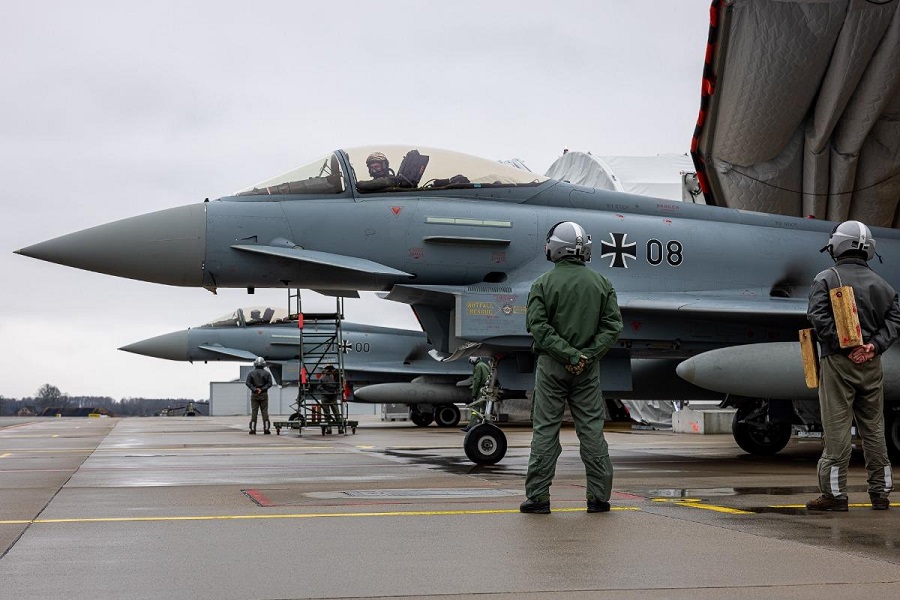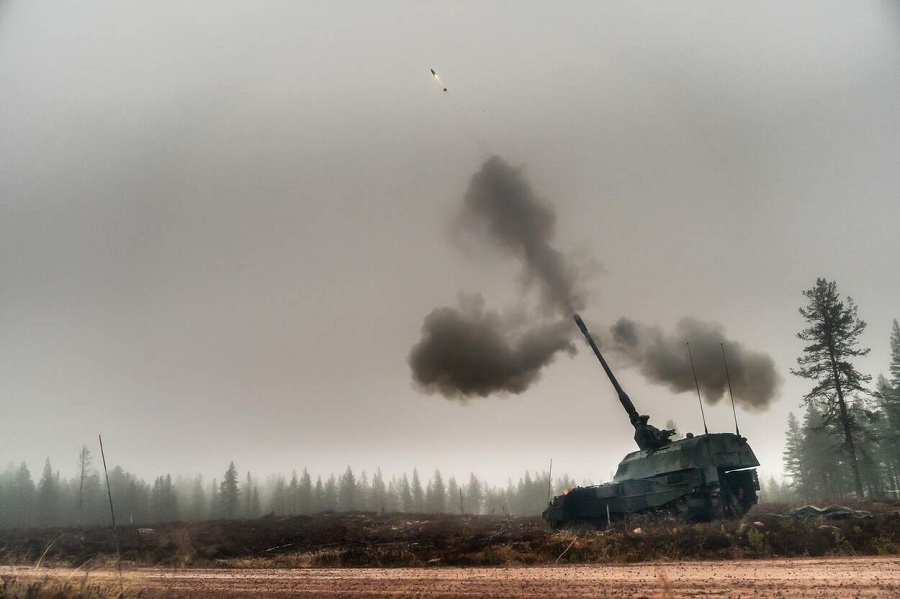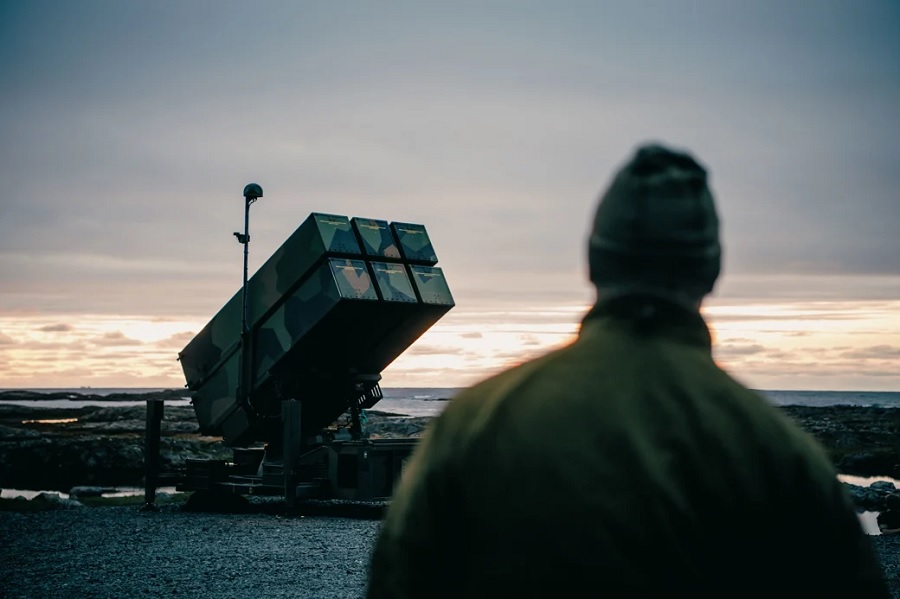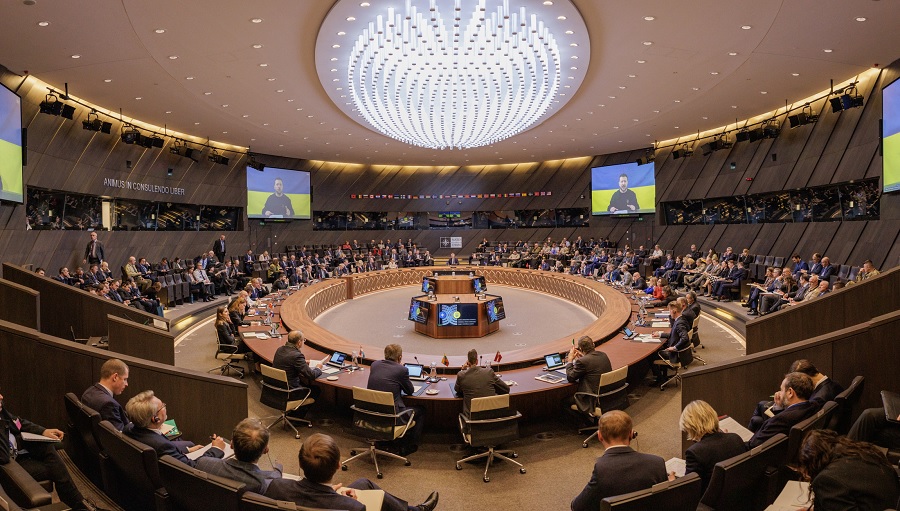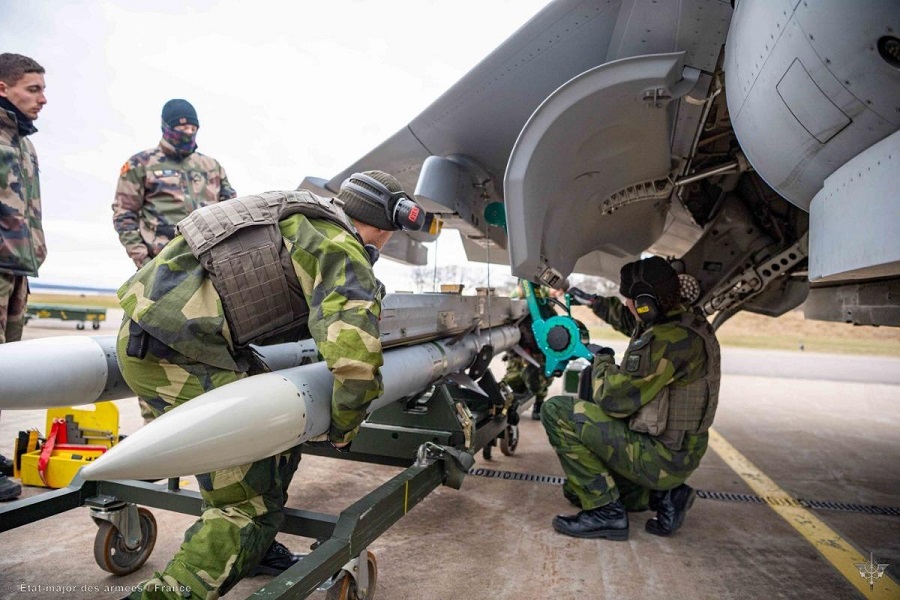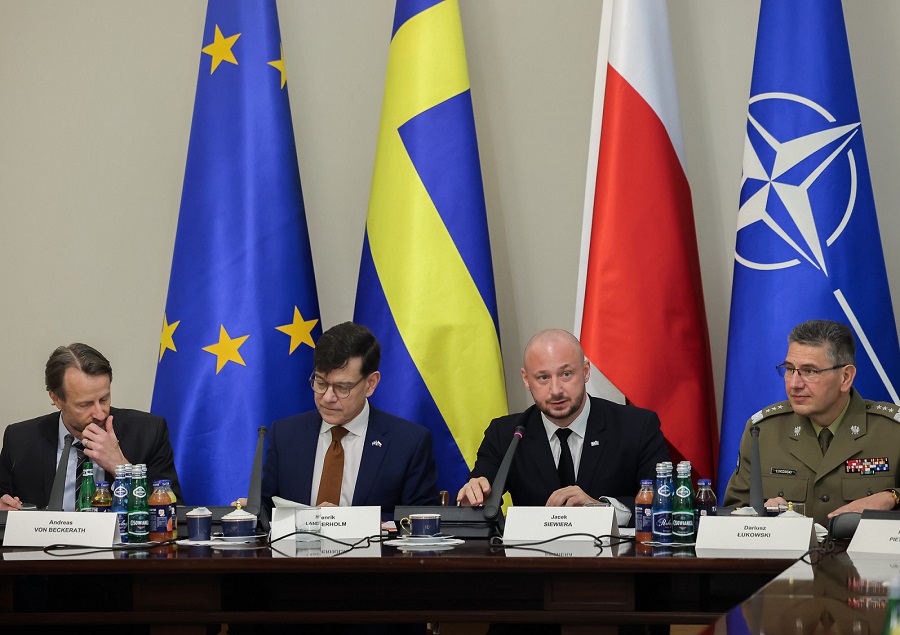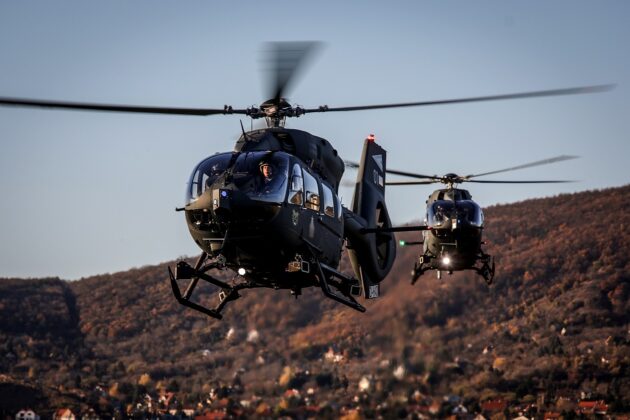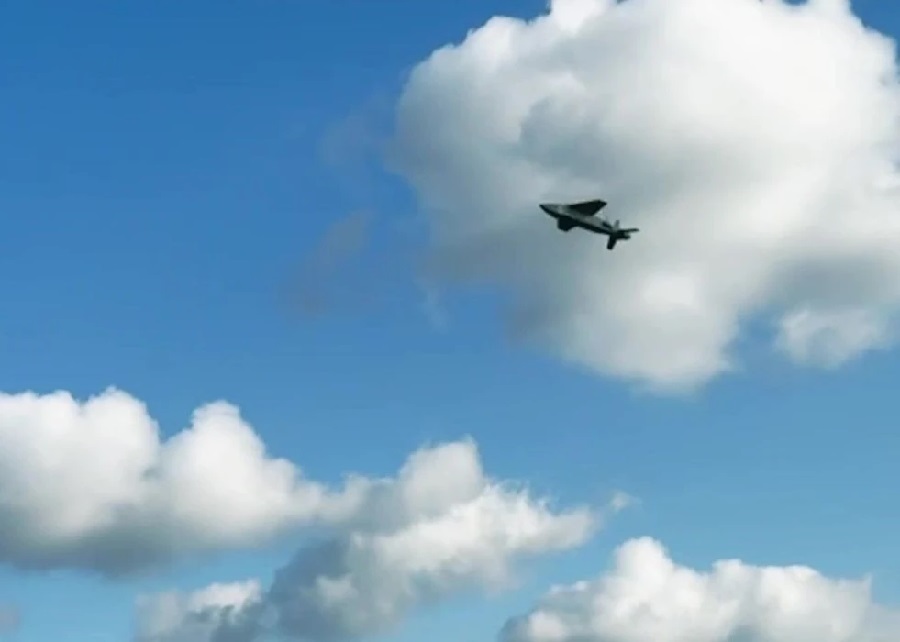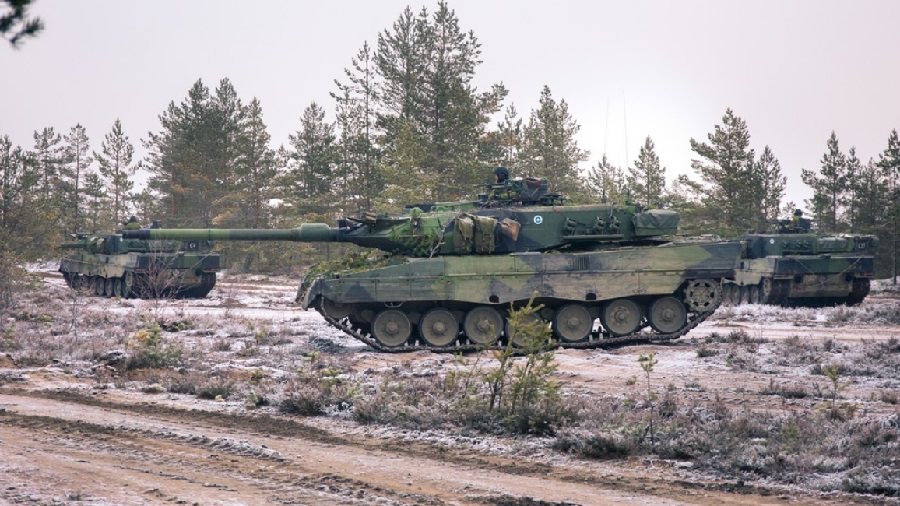The Russian war in Ukraine has exposed the question of ammunition stockpiles and production capacity in Europe and – to a lesser extent – north America. The limited existing stockpiles and constrained production capacities have moved from being a challenge for military logisticians and procurement experts to a major political issue. Recent New York Times reporting notes that the Ukrainians are using thousands of artillery rounds every day and describes impending shortages that could have a decisive effect on the war. In a conflict that is now existential not only for Ukraine and Russia but also for many European countries, the ability of Europe to provide ammunition to Ukraine has become a major test for its strategic credibility.
No single solution will solve the challenge alone, and so Europeans will need to adopt multiple tracks. These will range from short-term solutions, such as expanding European capacity to produce ammunition and more effectively coordinating procurement mechanisms, to longer-term efforts such as expanding access to financing or seeking extra-EU defence industrial partnerships.
The ammunition challenge
The ammunition problem is not exactly a surprise. Hardly any NATO or EU member state planned for the type of conflict taking place in Ukraine. The West collectively lacked both the stockpiles and the production capacity to meet the demands of high-intensity warfare. As early as mid-2022, the issue surfaced in debates at NATO and the EU. By autumn 2022, it was clear that industry was struggling to meet demand. In September 2022, the NATO secretary-general convened an extraordinary meeting of the Conference of National Armament Directors, NATO’s top procurement officials, urging allies to continue replenishing stocks as rapidly as possible. The European Union developed and expanded initiatives such as the unprecedented use of the European Peace Facility (EPF), an intergovernmental mechanism funded by the member states to partially refund EU member states donating equipment and ammunition to Ukraine.
The United States has provided 1 million 155 mm rounds to Ukraine while its industry produces around 15,000 shells per month, currently ramping up to 20,000 with a target of 90,000 a month by 2025. The US army is also replenishing its stocks through purchases overseas, with a major contract with the Republic of Korea in particular. EU member states are supposed to be able to produce 650,000 rounds a year (large calibre ammunition) and have recently committed to deliver “one million rounds of artillery ammunition for Ukraine in a joint effort within the next twelve months.” This is part of an unprecedented three-track approach developed by the EU which, on top of the use of the EPF, mobilises the European Defence Agency (EDA) to establish joint procurement contracts with the intent of speeding up contracting and delivery of key ammunition. The third track is led by the European Commission, which is working on ways to support ammunition production. Commissioner Thierry Breton is aiming to adapt the European Defence Industry Reinforcement Through Common Procurement Act to support the ramping up of EU production capacity. In his words, “it is time that the European defence industry moves to a wartime economy model to cater for our defence production needs”. More concretely, and using the precedent of vaccine production, Breton is looking at ways of using the EU budget to assist the expansion of industry production capacity within existing regulatory constraints.
These actions could have an important impact on the war effort. Financial Times reporting suggests that a larger and more certain supply of ammunition would allow the Ukrainians to double their use of artillery and change the military balance on the ground.
It nevertheless remains clear that the deliveries to Ukraine are not moving fast enough, especially as Ukrainians are preparing their own counter-offensives and, as multiple media reports suggest, there are ammunition shortages on the frontline. This situation requires further efforts and innovative approaches, especially as the issue is not limited to artillery rounds but covers the entire range of ammunition, from anti-tank missiles to air defence systems and, soon, to spare parts for the weapon systems delivered.
Doing better, moving faster
Despite the real accomplishments to date, more needs to be done, and fast, as the coming months will be critical for the future of Ukraine. Specifically, the EU and its member states should embark on, or expand, the following efforts:
- Expand the supply of Soviet calibre ammunition (152 mm artillery shells, 122 mm rockets). A large part of the Ukrainian artillery inventory is still Soviet issue. Soviet-era ammunition supply can thus produce immediate benefits for the Ukrainian military. Several central and eastern European countries including Poland, Bulgaria, Slovakia, the Czech Republic, and Romania retain some stockpiles and production capacity. Several countries such as the US, the United Kingdom, and Luxembourg are also scouting for available Soviet-standard ammunition stockpiles on the global markets, even if some suppliers and potential suppliers want to remain discreet to avoid antagonising Russia.
- Provide financial support to manufacturers to increase production. The EU could provide financial support to key ammunition manufacturers through funding and grants for research and development, expansion of production facilities, and investment in new equipment and technology. This is a responsibility of the European Commission, which now needs to move from its stated ambition to use the vaccine model to address particular bottlenecks and production capacity shortfalls.
- Review and significantly increase the stockpiles guidance under the NATO defence planning process to create an additional incentive for NATO allies to replenish their stocks and expand them. The existing guidance was too vague and failed to fully recognise the possibility of high-intensity warfare in Europe. With this review undertaken as a matter of urgency in autumn 2022, the updated guidance will also send a strong demand signal: it would indicate to industry that expanding production capacity is a good long-term investment as NATO allies are bound to invest in expanded stockpile targets in the coming years. The parallel EDA-led EU processes, known as Capability Development Process and Coordinated Annual Review on Defence, should be consistent and put an emphasis on stocks.
- Secure long-term investment in the defence sector. The expansion of the funding rules of the European Investment Bank (EIB) to finance investments in defence industry requires an urgent adaptation of the legal framework of the EIB.
- Address industry concerns associated within the implementation of environmental, social, and governance (ESG) regulations on the defence sector to help secure funding for long-term investment in defence production capabilities. Even though the EU debate is currently frozen, the reality remains that financial organisations are often reluctant to fund defence companies and that the EU’s ambiguous messaging regarding the defence industry from an ESG perspective fuels that problem. The European Commission message should be clear that sustainability starts with security, and that its legitimate efforts to promote greener technologies and best social practices will be consistent with the need to not undercut the financing of the defence sector.
- Build projects across the whole European defence industrial and technological base beyond EU manufacturers, to include Norwegian, British, Swiss, and Serbian companies as well as subsidiaries of US and Israeli companies. Norway is already fully associated with the EU initiatives. Notwithstanding domestic debates in the non-EU potential partner countries, the EU should explore ways to secure the association of such players, as this would significantly increase capacity.
- Address standardisation and regulation challenges to foster interoperability. The Ukrainian forces operate multiple artillery systems, but ammunition is often certified for a specific gun. An urgent certification effort could allow ammunition to be used more widely and limit technical risks and facilitate logistics. The NATO standardisation process is the appropriate path to conduct such an effort. For its part, the EU could work to standardise regulations across different European countries to make it easier for ammunition manufacturers to operate and expand across borders.
- Fast-track export licensing and lift, to the maximum extent possible, constraints on re-exports and cross-border transfers. This is an issue for like-minded states, as the primary responsibility lies with national governments. The recent German decision to swiftly allow the re-export to Ukraine of Polish (and formerly East German) Mig-29 is a positive sign that the issue is being addressed, and in this case avoided another over-politicised drama.
- Use all existing procurement mechanisms rather than debate competition. The EDA, the NATO Support and Procurement Agency, and efforts to aggregate requests under national framework contracts can be complementary and support the same objectives. There is not the time or the space for institutional competition. Member states should flexibly use the fastest and most efficient track available for any given contract.
- Promote high-tech solutions to expand production and address production constraints. Member states’ defence research and innovation agencies should, with the support of EU and NATO resources, explore options offered by 3D printing and fund research into all forms of innovative manufacturing, building on Ukrainian efforts to manufacture ammunition in non-traditional ways.
Of course, this focus on artillery ammunition should not lead policymakers to ignore the production and transfer of more complex weapon systems needed by Ukraine,such as short- and mid-range air defences and anti-tank missiles, which are also critical on the battlefield. Many of the recommendations above also apply to more complex weapons.
All these efforts are not mutually exclusive. Some will deliver results in the short term; others will require a sustained effort in the mid-to-long term. As many commentators and industry leaders continue to question the ability of Europe to deliver on its 1 million rounds pledge, Europeans have a duty and an opportunity to address the current challenges. They can show the world they are able to adjust to a new era of high-intensity warfare to support Ukraine and themselves.
About the author:
Camille Grand is a Distinguished Policy Fellow at the European Council on Foreign Relations. He leads the organisation’s work on defence and disruptive technologies in European security.
This article was originally published on the European Council of Foreign Relations (ECFR) website.












